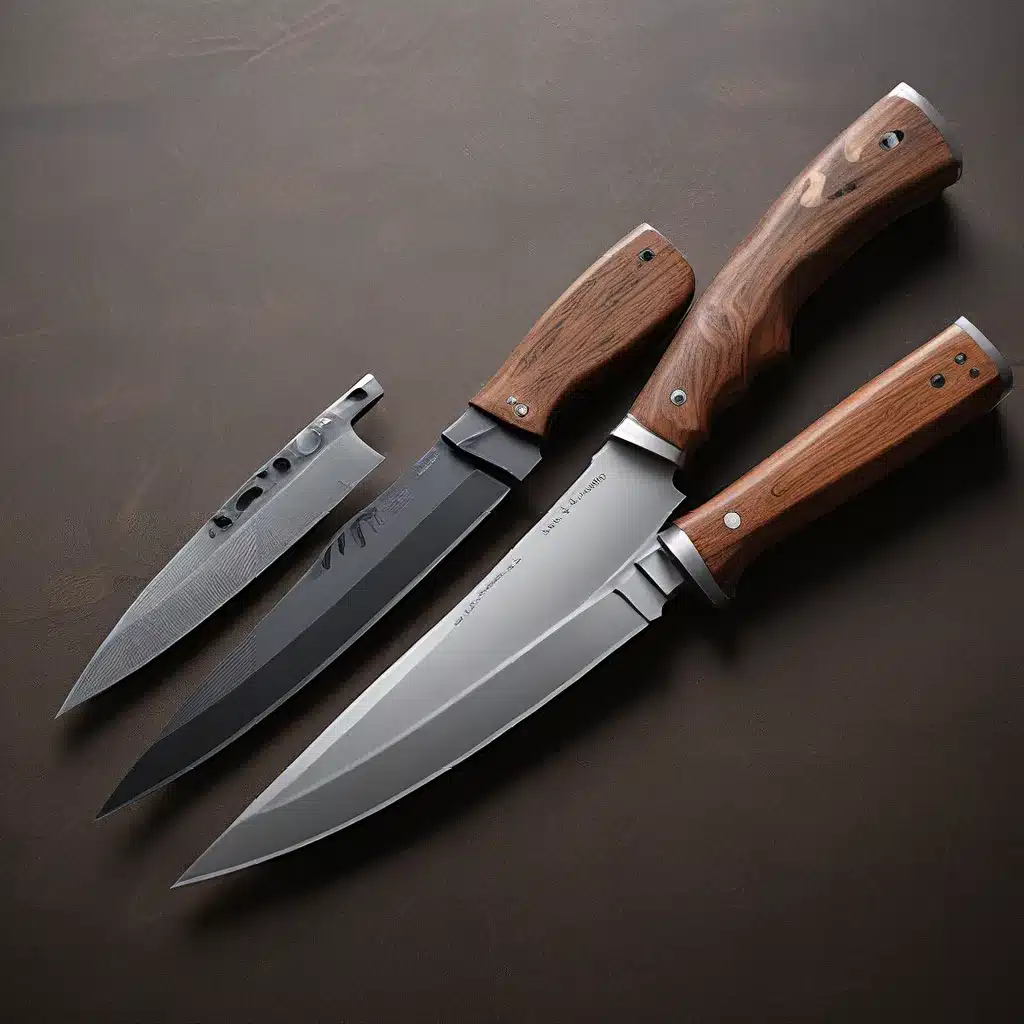
Ah, knives – those trusty tools that have been with us since the dawn of civilization. From the primitive stone blades of our ancestors to the high-tech, precision-engineered marvels of today, the evolution of knife design is a fascinating journey. As an avid outdoorsman and self-proclaimed “knife nerd,” I’ve always been fascinated by this ever-changing landscape.
The Humble Origins of Knives
Let’s rewind the clock to the Stone Age, where our primitive ancestors first started crafting simple tools for survival. The first knives were likely nothing more than sharpened stones or flint, used for tasks like butchering animals, preparing food, and even as weapons. These early knives were rudimentary, but they laid the foundation for the sophisticated blades we enjoy today.
As human civilization advanced, so too did the art of knife making. The Bronze Age ushered in the creation of metal blades, which were more durable and effective than their stone predecessors. Craftsmen began experimenting with different alloys and techniques, leading to the development of increasingly sophisticated knife designs.
The Rise of Specialized Blades
Over time, knives became increasingly specialized to meet the needs of different professions and activities. The Middle Ages saw the emergence of specialized blades like the Bowie knife and the Balisong (also known as the “butterfly knife”), each designed for specific purposes.
As technology continued to advance, knife makers started incorporating new materials and manufacturing techniques into their designs. The Industrial Revolution brought about the mass production of knives, making them more accessible to the general public.
The Modern Knife Landscape
Today, the world of knives is more diverse and innovative than ever before. Advancements in materials science have led to the creation of ultra-lightweight, ultra-durable blades that can withstand even the most demanding tasks. 3D printing has also revolutionized the industry, allowing designers and makers to bring their cutting-edge concepts to life with unprecedented speed and flexibility.
One company that’s at the forefront of this innovation is Herman Knives. Their team of engineers and designers are constantly pushing the boundaries of what’s possible, crafting stunning, functional knives that seamlessly blend form and function.
The Art of Knife Design
But the evolution of knives isn’t just about technological advancements; it’s also a story of artistic expression and personal preference. Each knife enthusiast has their own unique preferences when it comes to blade shape, handle material, and overall aesthetic.
Some prefer the sleek, minimalist design of a Spyderco Zulu, while others are drawn to the rugged, tactical look of a Renegade Outdoor blade. And let’s not forget the collectors who treat their knives as works of art, carefully curating their assemblages and debating the merits of different designs.
The Future of Knife Innovation
As we look to the future, I can only imagine the incredible advancements that await us in the world of knife design. Will we see the widespread adoption of 3D-printed blades? Will materials like carbon fiber and titanium become the new standard? Will knives become even more specialized, catering to the unique needs of different professions and hobbies?
Only time will tell, but one thing is certain: the cutting edge of knife design will continue to evolve, captivating enthusiasts and pushing the boundaries of what’s possible. And I, for one, can’t wait to see what the future has in store.
So, fellow knife aficionados, let’s keep our eyes peeled for the next big thing in the world of blades. Who knows – the next revolutionary knife design might just be waiting to be discovered in someone’s three-car garage. The possibilities are endless, and the excitement is palpable.


